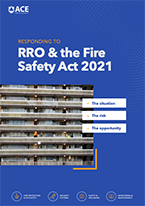Please Select
We understand that for building owners and operators, fire protection is a critical service and non-negotiable. It’s integral for the protection of your people and infrastructure. You need solutions matched to your needs, building regulations and industry best practice. You also want fire life safety systems capable of preventing, detecting and containing fire, providing the means to safely evacuate.
You know that the solutions you invest in, have to fully meet the updated Regulatory Reform Order 2005 (incorporating the Fire Safety Bill and BS8629 2020/1 fire evacuation legislative changes). Fire Alarm & Detection Systems also have to conform with BS5839-1:2017.
For over 30 years, Ace have provided end-to-end fire protection systems and life safety solutions, from initial Fire Risk Assessment to design, specification, commission and installation of fire detection and suppression systems, emergency lighting, monitoring and fire safety training under open-ended SLAs.
New or legacy fire systems are covered by Ace for monitoring, maintenance or upgrade.
Design, specify, install, commission, handover, maintain Fire Alarm & Detection Systems to suit your building regulations and application.
Aspirating Smoke Detection Systems designed to protect critical buildings and assets including Infrastructure, Utilities, Data Centres.
Supply, installation and maintenance of Fire Extinguishers to keep you safe, compliant and fully operational.
Design, installation, management, remote monitoring and maintenance of integrated public address and EVCS.








Discuss Fire Life Safety and Fire Suppression support for your site(s).